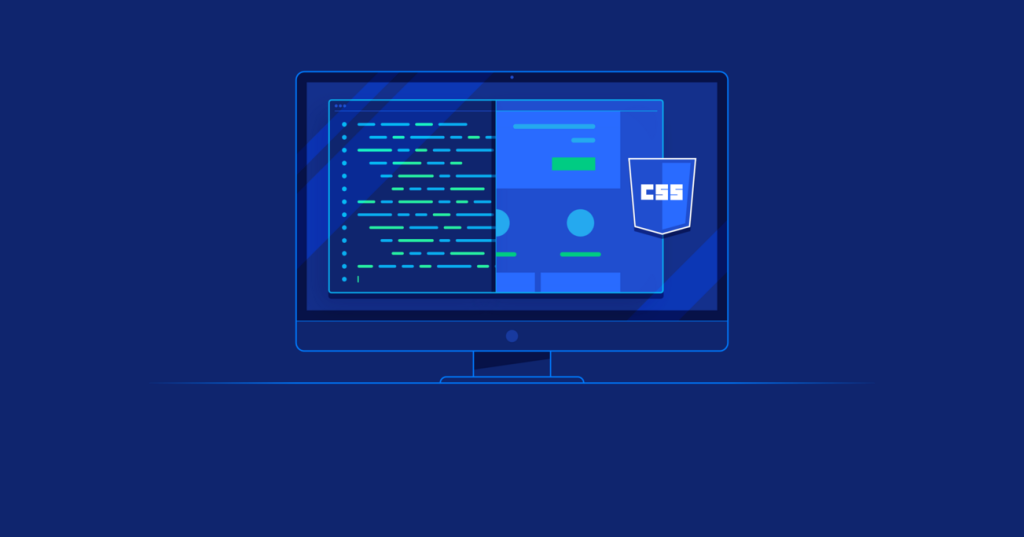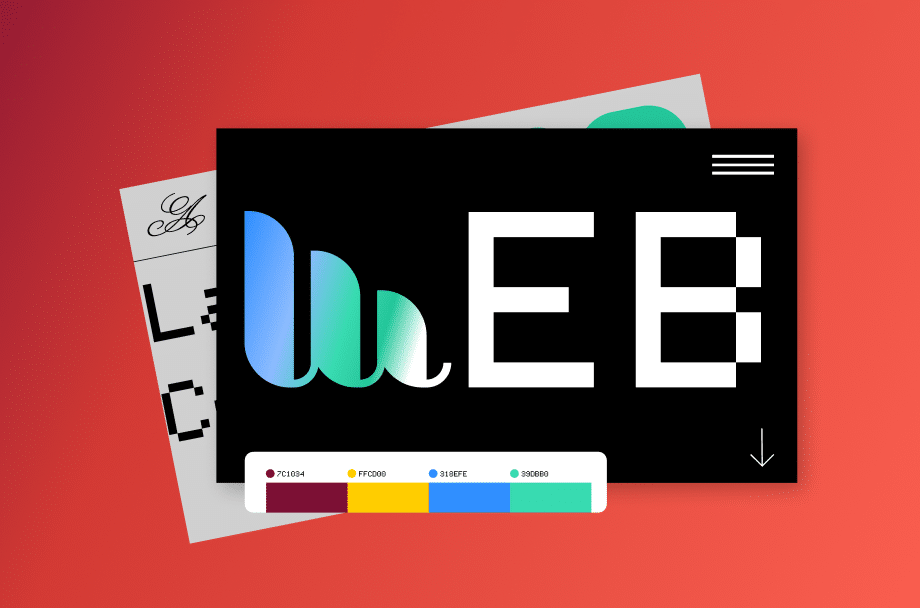In the realm of web design, the evolution of CSS has been a catalyst for transformative change, shaping the landscape of digital aesthetics and functionality. The introduction of new features within CSS has not only revolutionized the way websites are designed but has also redefined the boundaries of creative expression in the online realm. As designers and developers navigate this ever-evolving terrain, the implications of these advancements on user experience and interface design continue to provoke intrigue and curiosity among industry professionals.
Exploring the Impact of New CSS Features on Custom Web Solutions
The integration of semantic elements in CSS plays a crucial role in enhancing a website’s search engine optimization (SEO) capabilities. By leveraging new CSS features that prioritize semantic structure, web developers can optimize content for better visibility and ranking on search engines. This strategic approach not only improves the user experience but also ensures that custom web solutions are well-equipped to meet the evolving demands of digital marketing.
The Importance of Semantics in CSS for SEO
Incorporating semantic elements in CSS plays a pivotal role in enhancing search engine optimization (SEO) strategies and improving the overall performance of custom web solutions. By utilizing semantic markup, web designers can provide search engines with valuable information about the content and structure of a website, ultimately boosting its visibility and relevance in search results. This approach not only benefits SEO efforts but also enhances user experience by making the website more accessible and understandable. Below is a table illustrating the significance of semantics in CSS for SEO:
| Semantic Elements in CSS | Impact on SEO |
|---|---|
| Header tags | Improve keyword relevance |
| Navigation links | Enhance site structure |
| Image alt attributes | Boost accessibility and keyword optimization |

How Affordable Web Design is Enhanced by Latest CSS Capabilities
The latest CSS capabilities play a crucial role in enhancing the affordability of web design by introducing new properties that streamline the development process and reduce costs. These innovative features enable designers and developers to create visually stunning websites without compromising on quality or functionality. By leveraging these advanced CSS capabilities, professionals can offer cost-effective custom web solutions that meet the needs of clients while staying within budget constraints.
New CSS Properties and How They Benefit Affordable Web Design
The introduction of CSS animation has revolutionized web design by providing a cost-effective way to create interactive and engaging websites. By leveraging CSS animation properties, designers can add dynamic elements to their websites without relying on resource-heavy plugins or scripts, thus reducing development costs. This innovation in CSS empowers web professionals to deliver immersive user experiences while maintaining affordability in web design projects.
CSS Animation: Making Interactive Web Design Affordable
With the latest CSS capabilities, affordable web design is being revolutionized through enhanced CSS animation techniques.
- CSS animations offer smoother transitions.
- Keyframes allow for precise control over animation.
- Transforms enable 3D effects without additional libraries.
- Animations can be triggered by user interactions for engaging experiences.
Creative Web Design: Leveraging New CSS for Visual Excellence
The utilization of new CSS features opens up a realm of possibilities for creative web design, allowing professionals to leverage innovative techniques to enhance visual excellence. By incorporating advanced CSS capabilities, designers can unlock aesthetics that were previously challenging to achieve, resulting in visually compelling and engaging websites. This shift towards leveraging CSS for visual excellence not only enhances the overall user experience but also sets a new standard for modern web design practices.
Creative Web Design: CSS Techniques to Unlock Aesthetics
Harnessing the latest CSS techniques unlocks a world of creative possibilities, elevating web design aesthetics to new levels of visual excellence. With the innovative CSS features available today, web designers can achieve stunning visual effects and enhance user experiences like never before. Some techniques to consider include:
- CSS Grid: Creating complex layouts with ease.
- Custom Fonts: Adding unique typography for a distinctive look.
- Animations: Bringing websites to life with engaging motion effects.
- Responsive Design: Ensuring seamless viewing across various devices for optimal user experience.
Custom Web Solutions: Integrating Responsive Web Design with HTML 5 & CSS
As web design evolves, the integration of responsive web design with HTML 5 and CSS becomes increasingly crucial for creating adaptable and user-friendly websites. Web designers must adhere to best practices to ensure efficient coding with CSS, optimizing performance and accessibility across various devices. By embracing custom web solutions that leverage the latest technologies, professionals can deliver sophisticated and responsive designs that cater to the dynamic needs of modern digital audiences.
Efficient Coding with CSS: Best Practices for Web Designers
Efficient coding with CSS is essential for web designers looking to optimize their development process. By adhering to core principles of responsive web design with HTML5 & CSS, professionals can create websites that seamlessly adapt to various devices and screen sizes. Understanding CSS editor features that enhance coding efficiency is crucial for streamlining the design process and delivering custom web solutions that meet modern standards.
Responsive Web Design with HTML5 & CSS: Core Principles
Responsive web design principles with HTML5 & CSS are fundamental for modern web development.
- Fluid grids and flexible layouts optimize display across devices.
- Media queries enable targeted styling for different screen sizes.
- Flexible images and media ensure proper scaling and alignment.
- Mobile-first approach prioritizes content for smaller screens, enhancing user experience.
CSS Editor Features That Enhance Coding Efficiency
The evolution of web design tools has brought forth a range of CSS editor features that significantly enhance coding efficiency for modern web developers and designers. These features include real-time previews, auto-completion of code, syntax highlighting, and integration with version control systems. By streamlining the coding process and providing instant feedback, CSS editors empower professionals to work more efficiently and effectively in creating visually appealing and technically sound websites.

CSS Editor Tools: Revolutionizing Web Design and Marketing
CSS editor tools have revolutionized the landscape of web design and marketing, offering professionals the ability to streamline their workflow and enhance the visual appeal of their projects. By utilizing these tools effectively, web developers can achieve greater efficiency and precision in their coding, resulting in visually stunning and functionally robust websites. Practical examples of CSS applications in web design and marketing showcase the impact of utilizing CSS editor tools to elevate online branding and user engagement.
Tips for Using CSS Editors to Improve Your Web Projects
Revolutionizing the landscape of web design and marketing, CSS editor tools offer invaluable tips for enhancing web projects with efficiency and precision. These tools streamline the development process and enable professionals to create visually compelling websites that are technically efficient. Here are some tips for using CSS editors effectively:
- Utilize live preview features to see real-time changes
- Organize your stylesheets with nested rules for better readability
- Take advantage of code hinting to speed up coding
- Use color pickers to easily select and apply colors to elements
Practical Examples of CSS in Web Design and Marketing
Innovative CSS editor tools are reshaping the landscape of web design and marketing, providing practical examples of how CSS enhances visual appeal and technical efficiency in digital projects. These tools offer designers the ability to create responsive layouts, intricate animations, and personalized user experiences. For instance, CSS Grid allows for complex yet flexible website structures, enhancing the overall design aesthetic. Additionally, CSS animations can captivate audiences, drawing attention to key elements on a webpage. In marketing, CSS plays a crucial role in branding consistency by enabling uniform styling across various platforms. By harnessing the power of CSS editor tools, web designers and marketers can elevate their projects, creating engaging experiences that resonate with audiences and drive business success.
The Role of CSS in Crafting Web Design Services for Small Business
The utilization of advanced CSS techniques plays a crucial role in tailoring web design services to meet the specific needs of small businesses in today’s competitive digital landscape. Small businesses often require cost-effective solutions that can still deliver a visually appealing and user-friendly website. CSS provides the flexibility and customization necessary to achieve these goals efficiently. Here are some ways CSS contributes to crafting web design services for small businesses:
- Responsive Design: CSS enables the creation of responsive websites that adapt to various screen sizes, ensuring consistent user experience across devices.
- Fast Loading Speeds: By optimizing stylesheets and layouts, CSS helps in improving loading speeds, crucial for retaining visitors and improving SEO rankings.
- Branding Consistency: CSS allows for the consistent application of branding elements like colors, fonts, and logos throughout the website, reinforcing brand identity.
- Cost-Effective Customization: CSS offers a cost-effective way to customize website designs without the need for extensive coding, making it an ideal choice for small businesses with limited budgets.
Incorporating these CSS techniques into web design services for small businesses can result in visually appealing, fast-loading websites that effectively represent the brand while catering to the needs of the target audience.
Enhancing User Experience with Advanced CSS Features
In the realm of web design, the utilization of advanced CSS features like Flexbox and Grid has revolutionized the way websites are developed, particularly in enhancing responsiveness across various devices. Additionally, the integration of CSS Variables offers a dynamic approach to design, enabling customization and adaptability in real-time. These advanced CSS features play a crucial role in elevating user experience by providing more flexibility and interactivity, ultimately shaping the future landscape of web design practices.
How CSS Flexbox and Grid are Transforming Responsive Web Design
With the evolution of CSS Flexbox and Grid, responsive web design is undergoing a transformative shift towards enhancing user experience through advanced CSS features. These powerful tools provide web developers with the capability to create dynamic, flexible layouts that adapt seamlessly to various screen sizes and orientations. Here are four ways CSS Flexbox and Grid are revolutionizing responsive web design:
- Effortless Responsive Layouts: Easily create complex layouts that automatically adjust to different device sizes.
- Alignment Control: Precisely position elements within containers, ensuring a visually appealing design on all screens.
- Ordering Flexibility: Reorder elements on the fly without changing the underlying HTML structure, enhancing user flow.
- Space Distribution: Equitably distribute space within containers, optimizing content display for improved readability and aesthetics.
Understanding CSS Variables for Dynamic Web Design
Enhancing user experience through advanced CSS features, understanding CSS Variables is crucial for dynamic web design. CSS Variables, also known as custom properties, allow developers to store reusable values like colors, sizes, and fonts, making it easier to maintain and update styles across a website. By leveraging CSS Variables, designers can create more flexible and responsive layouts, adapt to different screen sizes seamlessly, and enhance user interactions. This advanced feature enables dynamic styling without the need for JavaScript, providing a more efficient way to manage design consistency. Below is a table showcasing the power of CSS Variables in enhancing web design:
| Feature | Description |
|---|---|
| Reusability | Easily reuse values across multiple elements |
| Dynamic Styling | Change styles dynamically based on user interactions |
| Maintenance | Streamline updates and ensure design consistency |
| Responsiveness | Create flexible layouts that adapt to various screen sizes |
Future of Web Design: CSS Innovations and Trends
As the digital landscape continues to evolve, the future of web design is intricately intertwined with the ongoing innovations and trends shaping CSS. CSS innovations and trends are driving the evolution of web design in exciting ways, paving the path for more dynamic and user-centric digital experiences. Here are some key aspects influencing the future of web design:
- CSS Grid Layout: Revolutionizing layout design, CSS Grid Layout provides a robust system for creating responsive grids with precise control over the placement and sizing of elements.
- Variable Fonts: Offering a new level of typographic flexibility, variable fonts allow designers to manipulate various font properties like weight, width, and slant dynamically.
- Dark Mode Styling: With the rising popularity of dark mode across devices and platforms, CSS is adapting to provide better support for designing interfaces optimized for low-light conditions.
- Motion Design: CSS animations and transitions are evolving to enable more sophisticated motion design, enhancing user engagement and interaction on websites.
These CSS innovations and trends are reshaping the future of web design, empowering designers to create more visually appealing, interactive, and accessible digital experiences for users across the globe.
Custom Web Solutions: Combining CSS with Other Front-End Technologies
The integration of CSS with other front-end technologies offers a potent combination for creating custom web solutions. By leveraging CSS features alongside complementary technologies, developers can enhance website performance and user experience. This strategic fusion opens up possibilities for innovative design approaches that cater to the evolving demands of modern digital landscapes.
Custom Web Solutions: CSS Features for Enhanced Performance
In the ever-evolving landscape of web design, the integration of CSS features for enhanced performance is crucial. By combining CSS with other front-end technologies, developers can create custom web solutions that optimize design consistency across various platforms. This approach not only improves user experience but also ensures that websites are both visually appealing and technically proficient.
Maintaining Design Consistency with CSS Across Multiple Platforms
Ensuring design consistency across multiple platforms using CSS remains a critical aspect of modern web development.
- Use responsive design techniques.
- Implement media queries for various screen sizes.
- Optimize images and videos for faster loading times.
- Test on different devices and browsers for compatibility.

How CSS Contributes to a More Accessible Internet
Promoting inclusivity through thoughtful design approaches, CSS plays a crucial role in enhancing accessibility across the internet. By providing web developers with the tools to structure content, define layouts, and customize visual presentations, CSS enables the creation of websites that are not only visually appealing but also accessible to individuals with various disabilities. Through features like flexible layouts, responsive typography, and enhanced color contrast settings, CSS allows designers to build websites that adapt seamlessly to different devices and accommodate users with diverse needs.
CSS contributes to a more accessible internet by supporting responsive design practices that ensure websites remain functional and visually engaging across a range of devices, from desktop computers to smartphones and tablets. This adaptability is essential for users who rely on assistive technologies such as screen readers or voice commands to navigate the web. Additionally, CSS features like media queries and grid layouts help designers optimize content presentation for different screen sizes, enhancing usability for individuals with varying levels of vision or motor skills.
Moreover, CSS empowers developers to implement accessible design principles, such as semantic HTML tags and ARIA attributes, which provide additional information to assistive technologies about the structure and functionality of web content. By leveraging these capabilities, designers can create websites that are not only aesthetically pleasing but also inclusive and user-friendly for all individuals, regardless of their abilities or limitations.
Comprehensive Software Development Solutions
Unlock the potential of digital transformation with our bespoke software development services, engineered to foster innovation, maximize efficiency, and catalyze business growth.
Conclusion
In conclusion, the evolution of CSS has revolutionized web design by introducing new features that enhance visual excellence, affordability, and user experience. The integration of advanced CSS capabilities with other front-end technologies has paved the way for custom web solutions that are both sophisticated and inclusive. As CSS continues to innovate and adapt to changing digital landscapes, it sets new standards for web design, shaping the future of online interactions and accessibility.
How Does the Evolution of CSS Impact the Overall User Experience on Websites?
The evolution of CSS significantly influences overall user experience on websites by enabling web developers to create visually appealing and technically efficient designs. New features enhance responsiveness and interactivity, leading to improved user engagement and accessibility.
Can You Provide Examples of How CSS Is Integrated With Other Front-End Technologies to Create Custom Web Solutions?
CSS is seamlessly integrated with JavaScript frameworks like React and Angular to create dynamic and interactive user interfaces. By combining CSS with front-end technologies, developers can craft custom web solutions that enhance user engagement and provide a personalized browsing experience.
What Are Some Innovative CSS Editor Tools That Are Transforming Web Design and Marketing Strategies?
Innovative CSS editor tools are revolutionizing web design and marketing strategies by providing intuitive interfaces, real-time previews, and robust code editing capabilities. Features like live collaboration, code suggestions, and grid systems are empowering designers to create visually stunning and responsive websites efficiently.
How Does the Affordability of Web Design Benefit From the Latest CSS Capabilities, and What Cost-Saving Measures Can Be Implemented?
The latest CSS capabilities enhance web design affordability by enabling efficient development and opening creative avenues. Cost-saving measures include leveraging reusable code snippets, optimizing performance to reduce hosting expenses, and utilizing responsive design principles for broader reach.



